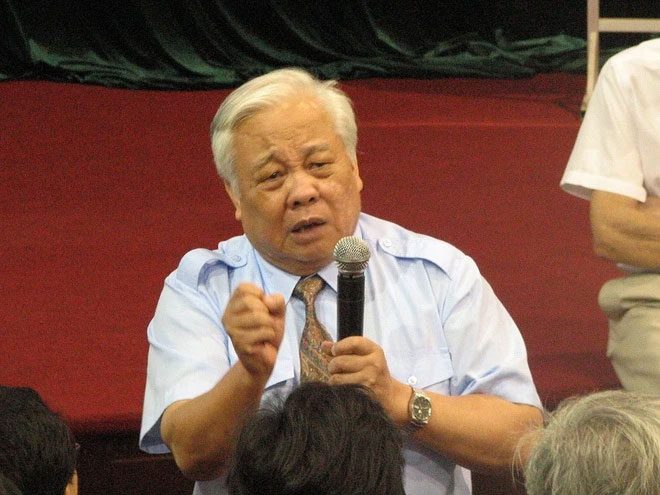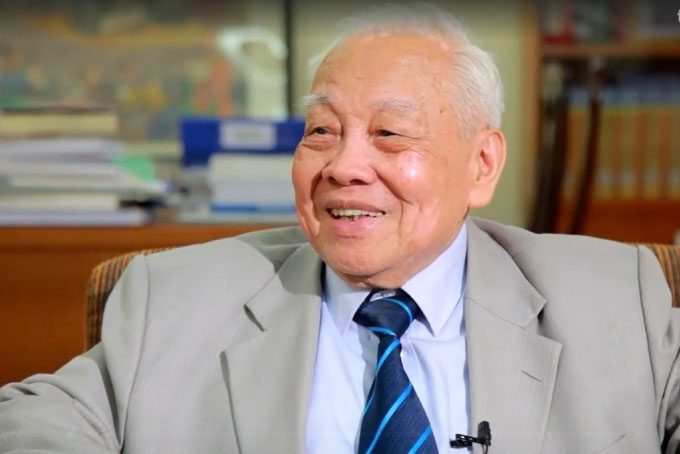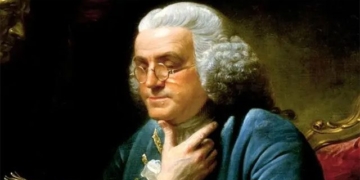The professor was an outstanding physicist, a prominent figure with significant contributions to the innovation and development of revolutionary science in Vietnam.
From a Physics Enthusiast to Professor at Age 30
Professor Nguyễn Văn Hiệu (1938-2022) was a towering figure in the field of physics in Vietnam, making substantial contributions to the country’s scientific advancement.
He was born into an intellectual family in Hanoi, and his childhood was marked by displacement due to war. Nguyễn Văn Hiệu completed 8 years of primary education, but due to his family’s financial struggles, he once worked as a laborer in a knitting workshop. It was during this time that he developed a deep love for physics.

Professor Nguyễn Văn Hiệu as a young man.
After the liberation of Hanoi, he enrolled in the Mathematics-Physics Faculty at the University of Education. Nguyễn Văn Hiệu graduated with a Bachelor’s degree in Physics with honors at the age of 18 and became a lecturer at Hanoi University (now known as Vietnam National University, Hanoi). At this time, he and Professor Nguyễn Lân Dũng were the two youngest faculty members at the university.
In 1960, he was sent to work at the Joint Institute for Nuclear Research in Dubna, Soviet Union. His dedication and passion for research won the affection of professors at the Dubna Institute, who took him under their wing as a student.

Professor Nguyễn Văn Hiệu during his time in the Soviet Union.
In two and a half years, Nguyễn Văn Hiệu published 12 research papers on neutrino physics, many of which gained international recognition. His work titled “Theory of Symmetry of Fundamental Particles” was published as a book and has been utilized by many countries worldwide.
He successfully defended his doctoral thesis at the age of 26, becoming the youngest Ph.D. holder in Vietnam and the former Soviet Union at that time. In 1968, Nguyễn Văn Hiệu became a Professor of Theoretical Physics and Mathematical Physics at the Dubna Institute and Lomonosov University when he was just 30 years old.
A Monument of Vietnamese Science
A year later, the professor returned to Vietnam and was tasked by Prime Minister Phạm Văn Đồng with establishing the first Physics Institute, where he served as the director. Professor Nguyễn Văn Hiệu was the youngest director in the history of Vietnamese science.
By 1975, the Central Office for Southern Vietnam decided to establish the Southern Scientific and Technical Institute under the temporary revolutionary government of Southern Vietnam, appointing Professor Nguyễn Văn Hiệu as its director. In 1983, he became the director of the Vietnam Academy of Science.
In 1993, the Vietnam Academy of Science was reorganized into the National Center for Natural Science and Technology. Professor Nguyễn Văn Hiệu served as the center’s director while also overseeing the Institute of Materials Science.

Professor Nguyễn Văn Hiệu was the youngest director in the history of Vietnamese science.
Throughout his career, Professor Nguyễn Văn Hiệu published over 200 scientific works across various fields, from weak interactions and symmetries of fundamental particles to analytical theories of strong interactions and field theory, as well as methods of quantum field theory in solid-state physics. Most of these works were published in prestigious international journals.
In the field of solid-state theory research, scientists in Vietnam and around the world regarded Professor Nguyễn Văn Hiệu as a leading expert and a big brother in the field.
“One must consider scientific research as one’s career! There is no glory without accompanying sacrifices; sometimes one must endure hardships to achieve their passion. In science, it is essential first to pursue very modern research directions and secondly to focus on research areas that the country needs. Think about what the country requires and work on that,” Professor Nguyễn Văn Hiệu believed.
In addition to his research, he made significant contributions to the organization of large-scale cultivation of Artemisia annua in the northern mountainous region, creating a raw material source for the industrial production of malaria treatment drugs for people in remote areas and ethnic minorities.

He also made special contributions to the large-scale cultivation of Artemisia annua.
In 1999, Professor Nguyễn Văn Hiệu accepted a special invitation from the Director of Vietnam National University, Hanoi, to serve as the Head of the Technology Faculty. He became the first Rector of the University of Technology – Vietnam National University, Hanoi, established in 2004.
Having spent many years in higher education, Professor Nguyễn Văn Hiệu always hoped: “How to teach my students: if they are engineers in factories, they should work well; if they are scientists, they should make many inventions; if they are teachers, they should deliver engaging lectures and impart a lot of knowledge to their students…”
He was also one of the first to lay the foundation for Vietnam’s space science and technology sector through the Intercosmos program. For his contributions to the field of Physics, Professor Nguyễn Văn Hiệu was awarded the Lenin Prize for Science and Technology (1986), the Ho Chi Minh Prize for Science and Technology (1996), and the First-Class Independence Medal (2009)…




















































